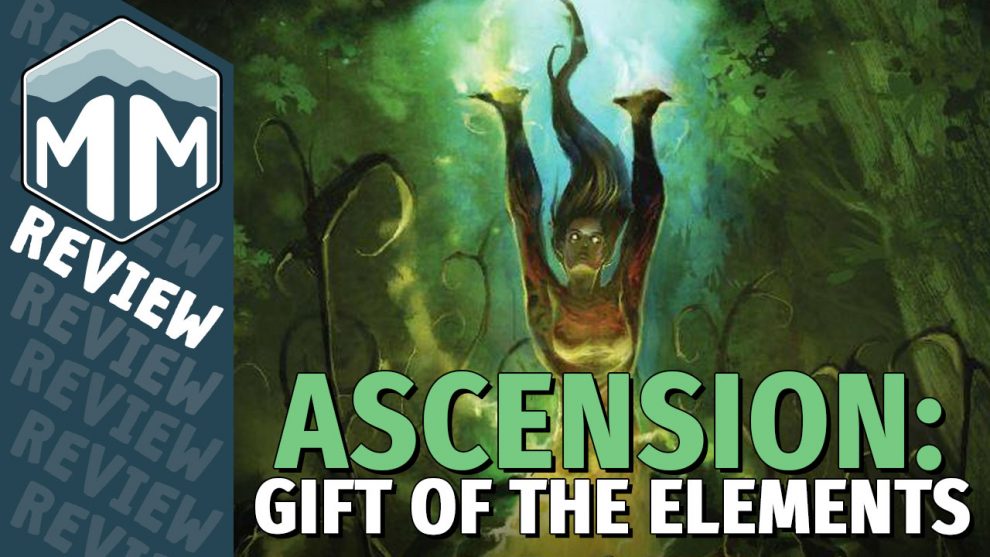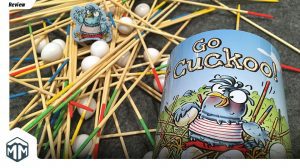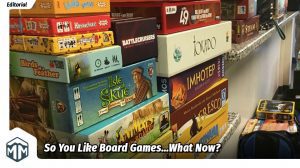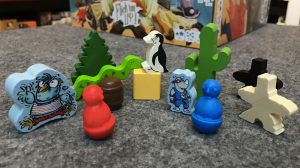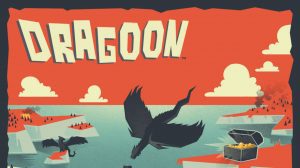No matter what the medium, any long running series will have its ups and downs. Sometimes a franchise can start out strong and then fall short as it continues to iterate (The Matrix). Other times a series might start out weak, but really grow into it’s potential (Parks and Rec). Every now and then you have a franchise that seems to peak somewhere in the middle (The Dark Knight). When a series lasts long enough, it will eventually have to find some way to reinvent itself.
Star Wars is an infamous example in that it both failed and succeeded in this endeavor on two different occasions. I think most people understand why its first reinvention wasn’t viewed very highly, but its newest iteration is quite interesting. Instead of breaking outside the box, The Force Awakens drew people in by going back to the basics. The sets, props, and characters greatly mimicked those of the original trilogy. Sometimes it just feels right to go back to the basics and improve on a formula that is already successful.
Enter Ascension: Gift of the Elements

What is Ascension?
If you’re not familiar, Ascension is one of the veteran deck building franchises of the hobby. Released just two years after the first real deck building game, Dominion, hit the market, Ascension took some of the ideas and concepts that made its predecessor great while also mixing up the formula a good bit. The game was actually designed by a few professional Magic: The Gathering players who wanted to bottle the excitement of building a Magic deck into a stand-alone board game.
Over the years, the Ascension model has taken different forms. For its first few releases, the series would have a new stand-alone game followed by a small expansion that built off of that base game’s main mechanics. Each new base game would introduce a new idea or ability in order to spice the series up a bit. All of them could be mixed together, but they played best with their specific expansions.
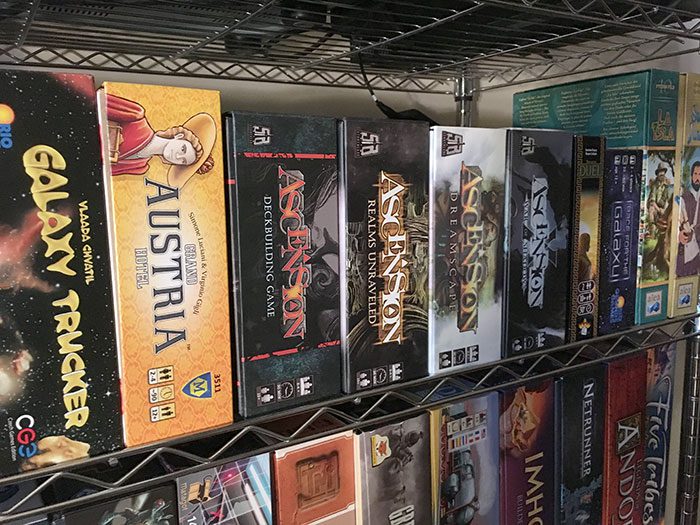
After the first three Ascension game cycles, Stone Blade Entertainment decided to change their release model from one game plus an expansion, to simply releasing more base games. This meant that they could spend more time experimenting with cool ideas since they didn’t have to commit an entire release cycle to them. The last few Ascension releases (Dreamscape and War of Shadows) really stepped out into unknown territory by adding in some new mechanics that were a far cry from their traditional systems. While they were certainly interesting, I felt like these new mechanics made the game a bit harder for new players to pick up and learn.
Normally, I wouldn’t give this much backstory for a game I’m reviewing, but Ascension is a funny case. After seven years, eight games, three expansions, and countless promotional cards, it might seem a bit confusing to see another version hitting the shelves of your local game store. Hopefully a little context will help out as you begin to explore this series further!
What is a Deck Building Game Anyway?
(If you’re familiar with deck builders, you can skip this part)
Like I mentioned before, Ascension was one of the first major deck building games released after Dominion took the industry by storm. If you’re unfamiliar with how this style of game works, generally, each player starts with a preset deck of resource cards, and draws a certain number from their deck each turn. These cards can then be used to buy more powerful cards out of a collective set in the center of the table.
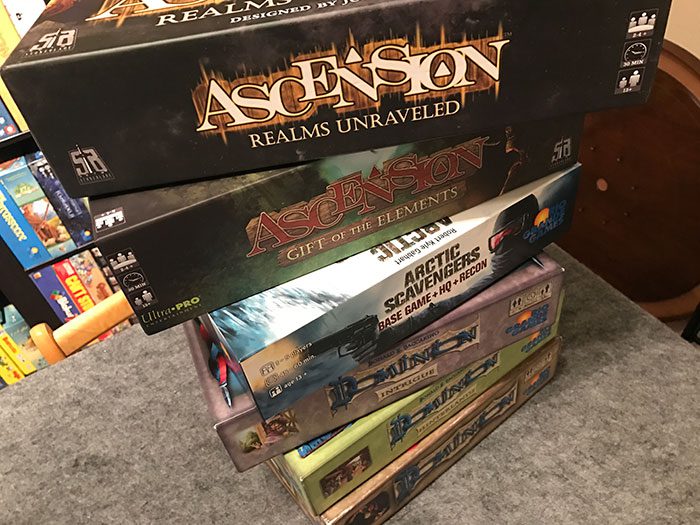
Once players go through their whole deck, they add in the cards that they have purchased with the cards that they already used and shuffle them to create a new draw pile. Some games have a set number of cards to buy from, while others have a random set that changes as players purchase them. Most deck building games have a specific goal that triggers the end of the game and points are usually scored by victory point values on the cards they purchased.
How to Play Ascension
The basic Ascension formula has been mostly unchanged for the past four years. While each set has added something new, the basic rules have always been the same. That’s allowed for each set to be compatible with the others.
In Ascension, each player is trying to win the game by having the most honor points, which are earned from buying cards or killing monsters. Each card has a star in the corner that denotes its point value, while killing monsters gives physical gems that represent honor points. The game ends at the end of the round that a player takes the final honor point gem from the board.

The player’s turn
During a player’s turn, they will draw five cards and choose how to play them. Each player’s starting deck consists of eight Apprentice and two Militia cards, so there are limited options at first. Each Apprentice card adds one rune to the player’s spending power for the turn. Runes are the form of currency that are used to purchase new cards. Each Militia card adds one power to your pool that can be used to defeat monsters.

A player is able to buy as many cards and defeat as many monsters as possible, but their resources will be limited at first. If a player chooses to buy a card, they “spend” the amount of runes noted in the top right corner of the card and then place it in their discard pile. If destroying a monster, the power is “spent” and the monster is sent to the void (removed from the game), often granting a bonus or honor point gems. Whether buying a card or defeating a monster, a new card is immediately revealed to take its place. Once the player has run out of resources or chooses to pass, they discard any unused cards and draw a new hand. If there are no cards to draw, they shuffle their discard pile and proceed to draw five cards from it.

Breaking down the cards
Between all of the cards in Ascension, there are many options that are available for players during their turn. There are always six random cards flipped up to form the “center row” which will consist of a mixture of heroes, constructs, and monsters.
- Heroes are cards that will often give the player some kind of special power when they play them. Some will give the player more power or runes to spend while others will grant the player with a powerful effect to use. Heroes are also all tied to a specific faction (Mechana, Lifebound, Void, or Enlightened) and will often synergize with other cards of their faction.
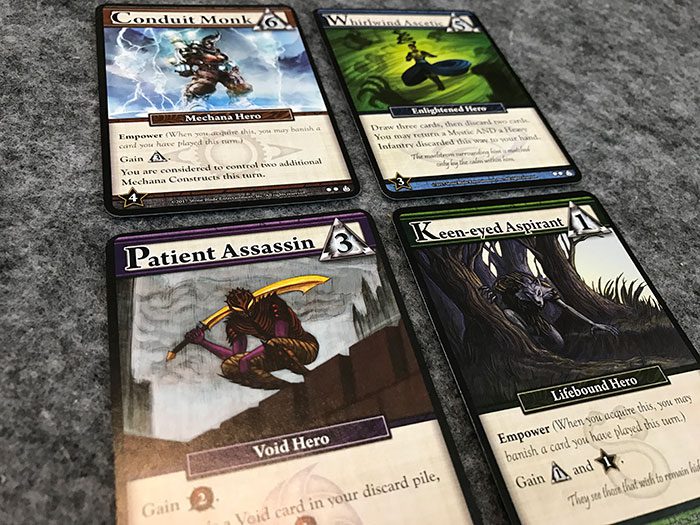
- Constructs are cards that stay in play, even after your turn ends. These cards provide some sort of special ability that is either used once per turn or upon fulfilling a specific requirement on your turn. Constructs are also tied to the four factions and abilities are often heavily reliant on cards of their respective factions.
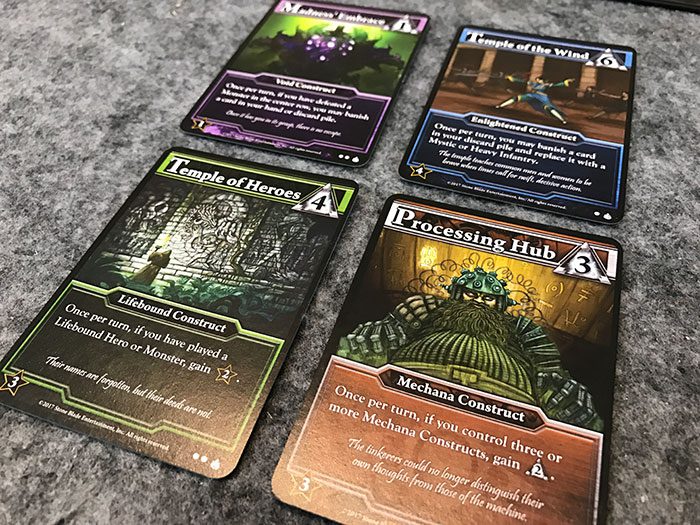
- Monsters are defeated instead of purchased. Each monster has a different ability that is triggered as soon as a player defeats it. Some will simply give the player a specific amount of honor points while others might give the player an immediate bonus ability. Defeating monsters is the only way to receive honor points gems and thus, the only way to end the game.
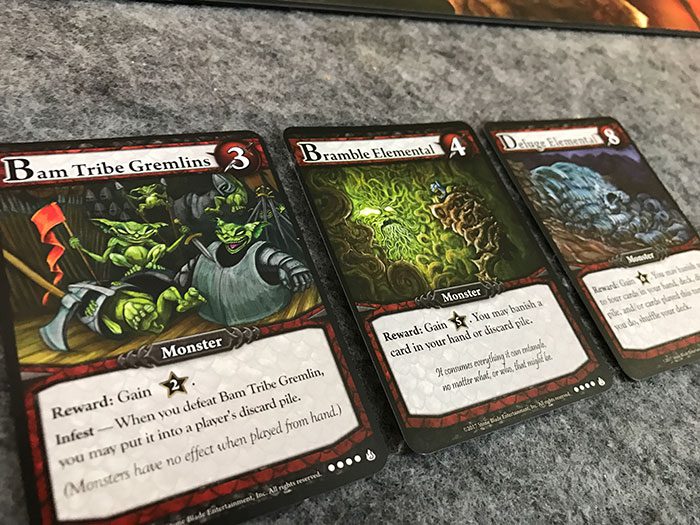
Alongside the random cards in the center row are three piles of cards that are always available until players purchase them all. The Mystics are an upgraded version of the Apprentice cards which give two runes instead of one. Similarly, the Heavy Infantry cards are an upgraded version of the Militia cards which give two power instead of one. The last is the Cultist which is a monster that is always available to defeat for two power that grants one honor point gem.

What’s New With Gift of the Elements?
As I mentioned before, one of my favorite things about this new entry in the series is that it really goes back to the basics that make Ascension so fun. Instead of coming up with some crazy new mechanic that drastically alters the formula, Stone Blade chose to take a look at some older mechanics and improve on them. (If you’re interested in that process, be sure to check out the designer diary from Justin Gary over on BGG.)
In Gift of the Elements, there are two main mechanics that were taken from older versions, reworked, and combined into one new and improved mechanic. Namely, the event cards from Storm of Souls which altered the rules for all players until a new one was drawn, and the flip cards from Realms Unraveled which made it possible to “flip” a card over to it’s more powerful side by fulfilling a specific requirement.
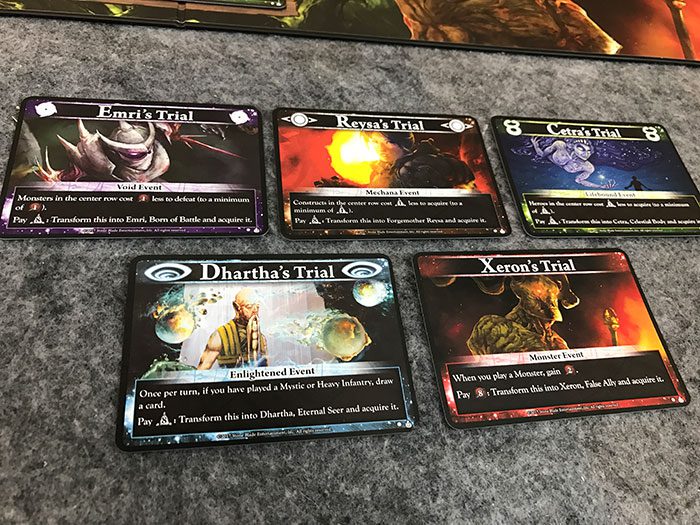
These new flip/event cards are mixed into the main deck and are set above the center row when drawn. Each card has a specific ability (like decreasing the price of cards) that stays in effect until a new one is drawn. In addition to this ability, each one can be purchased by spending a specific amount of power or runes. When acquired, these cards are flipped into a hero with an extremely powerful ability and added to your discard pile like any other card.
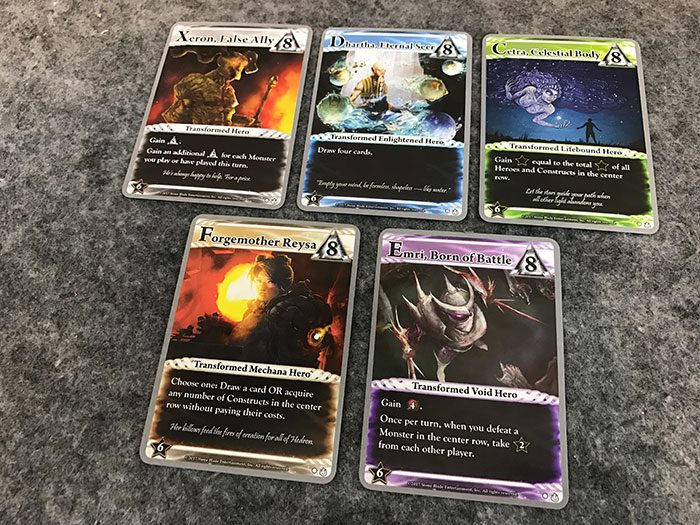
In addition to reforming and improving some classic mechanics, there are two small additions that are completely new to the series. The first, Infest, is an ability that appears on some monsters that allows the player to place the monster into an opponent’s discard pile instead of the void when defeated. This means that the player will draw cards that can not be used. The second, Empower, is an ability that appears on hero cards that allow the player to banish a card from their hand or discard pile into the void. These help combat monsters that have infested your deck and can also be used to get rid of cards that are less effective later on (like Apprentices and Militia).
Thoughts
I’ve always enjoyed the Ascension games, but Gift of the Elements is definitely a strong return to form for the series. The gameplay is simple enough to teach quickly, but allows for endless amounts of card combinations keeping the game fresh over many plays. The more prevalent theme of banishing cards to make your deck as efficient as possible certainly adds a new level of subtle complexity that I find very satisfying and intriguing. Finding the best balance of banishing cards to make your deck better will certainly take some time, but it can feel pretty rewarding when it clicks. The infest mechanic also adds in a nice layer of player interaction that can help balance out a runaway leader.
Overall, the new and updated mechanics feel great, but I do still have a few qualms with them. Largely, I was disappointed in the lack of variety that they presented. There are only five event cards available (one for each faction and one for monsters) and three of the five feel very similar. One discounts constructs by one, one discounts monsters by one, and the other discounts heroes by one. They do each change the feel of the game a bit, but they just feel very similar. Of the other events, one gives you two power when you play a monster (which leads to some cool synergy) and the other lets you draw a card the first time you play a Mystic or Heavy Infantry each turn. The latter two really make players have to change their strategy while the first three were generally anticlimactic when revealed.
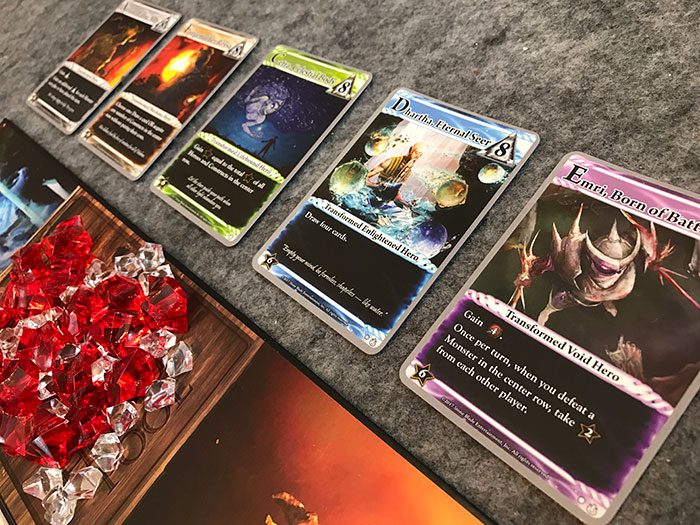
While the events might not have been very exciting, the flipped monsters felt distinguishably different from each other and really added some nice variety to the games. I still wish there were more than five available, but it does feel pretty good to get to play them.
The addition of the infest mechanic is certainly a neat spin on the idea of slowing the other players down, but while it worked in some groups, it didn’t in others. I felt like this mechanic works perfectly when the group uses it to try to slow down the leader, but in one particular game it was used multiple times towards the losing player out of spite for another move, which didn’t quite feel right. Luckily, there are plenty of cards to combat this (and even some that benefit from having monster cards in your deck) and I think it doesn’t take the entire mechanic down.
Outside of the gameplay itself, the components are all of decent quality. I did notice that the insert felt a little more flimsy than the previous games and that the box wasn’t as sturdy, but neither of those issues really bothered me too much. The one complaint that I did have, though, was that the rulebook came bent around the insert. At first I thought that it was just an unfortunate placement in shipping, but I realized that it actually doesn’t fit flat in the box at all. In comparison, the old boxes are just slightly wider. This seems like a strange oversight as the rulebook could have been printed smaller considering its large text and images.
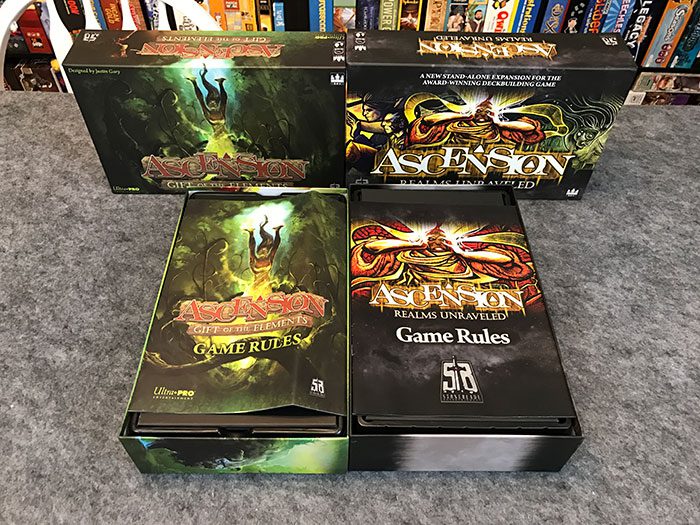
Once Ascension, Always Ascension
Despite the few complaints I have, I really like this game. Perhaps it helps that I enjoyed the games that came before it, but I still think that this is a great refresher for the series and would definitely recommend it. It holds true to its simple formula while executing a few new, carefully placed, twists. If you’re new to the series, this would be a great place to start! If you’re a veteran or haven’t picked a new Ascension game up in a while, I’m confident that you will like it all the same.
What do you think about Ascension: Gift of the Elements? Give us your opinions about what you like and/or dislike about the game in the comments below!


